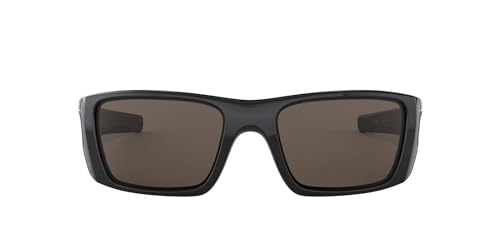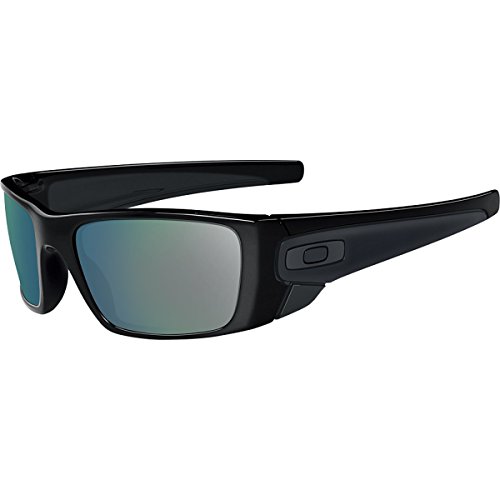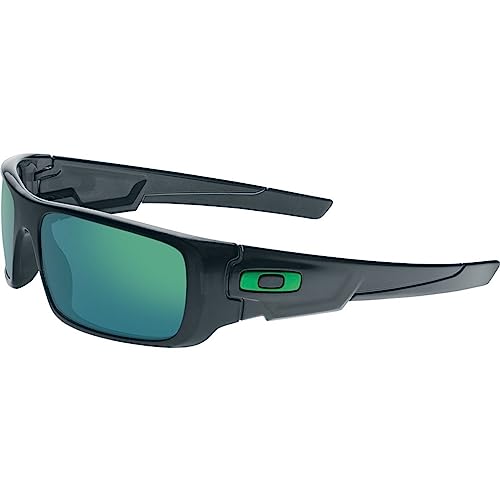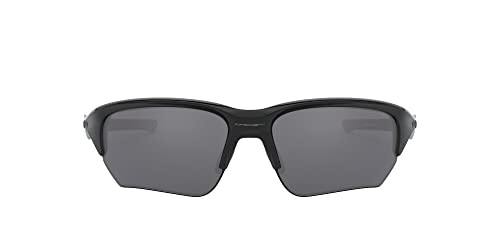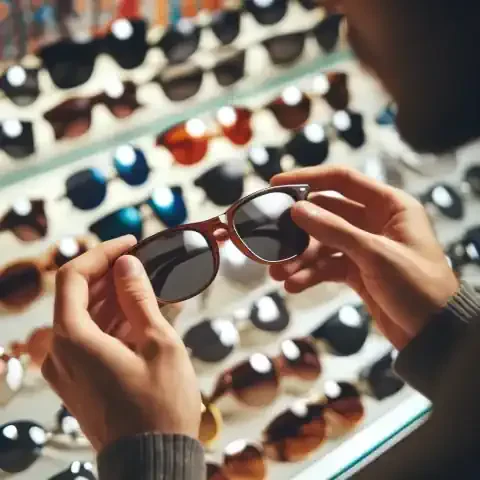Introduction
Polarized sunglasses have become ubiquitous accessories in modern life, offering not just a stylish touch to outfits but also serving as essential tools for protecting our eyes and enhancing visual clarity. Understanding the significance and functionality of polarized sunglasses begins with a grasp of their definition and historical evolution.
Definition of Polarized Sunglasses
At its core, polarized sunglasses are specialized eyewear designed to reduce glare and improve visual comfort by filtering out polarized light. But what exactly does "polarized light" mean? Light, typically emitted by the sun or reflected off surfaces, travels in various directions. When this light hits a surface, such as water, snow, or a road, it becomes polarized, meaning the light waves align horizontally. This horizontal polarization creates intense glare, which can be not only annoying but also potentially harmful to our eyes.
Polarized sunglasses feature a special filter that blocks horizontally polarized light, selectively allowing vertically oriented light to pass through. As a result, glare is significantly reduced, leading to clearer vision, enhanced contrast, and reduced eye strain, especially in bright outdoor environments.
Brief History of Polarized Sunglasses
The roots of polarized sunglasses can be traced back to the 1930s when Edwin H. Land, an American physicist and inventor, developed the concept of polarizing light. Land's breakthrough paved the way for the creation of the first polarized sunglasses, which were initially used by pilots to reduce glare at high altitudes. However, it wasn't until the 1980s that polarized sunglasses gained widespread popularity among outdoor enthusiasts and the general public.
Since then, advancements in lens technology and manufacturing processes have made polarized sunglasses more accessible and versatile. Today, they are available in a wide range of styles, colors, and price points, catering to diverse preferences and needs.
Importance of Protecting Eyes from Harmful UV Rays and Glare
Our eyes are incredibly sensitive organs, susceptible to damage from prolonged exposure to ultraviolet (UV) radiation and intense glare. Overexposure to UV rays can lead to various eye conditions, including cataracts, macular degeneration, and photokeratitis (sunburn of the cornea). Likewise, glare can cause discomfort, eyestrain, and even temporary vision impairment, posing risks in activities such as driving, fishing, and skiing.
Polarized sunglasses offer a dual benefit by not only blocking harmful UV rays but also minimizing glare, thus safeguarding our eyes from potential harm. By providing comprehensive protection, polarized sunglasses contribute to maintaining optimal eye health and visual acuity, particularly in outdoor settings where exposure to UV rays and glare is heightened.
Overview of What the Article Will Cover
In the subsequent sections, this article will delve deeper into the mechanics of polarized sunglasses, exploring how they work to reduce glare and enhance visual clarity. We will examine the various benefits of polarized sunglasses, from improved contrast and depth perception to enhanced comfort and safety. Additionally, we will explore the diverse applications of polarized sunglasses across different activities and environments, highlighting their versatility and effectiveness. Furthermore, we will discuss the differences between polarized and non-polarized sunglasses, aiding readers in making informed choices based on their specific needs and preferences. Lastly, we will provide practical tips for selecting the right pair of polarized sunglasses and address common myths and misconceptions surrounding their use. Through this comprehensive exploration, readers will gain a thorough understanding of polarized sunglasses and their indispensable role in protecting and enhancing our vision in today's dynamic world.
How Polarized Sunglasses Work
Understanding the mechanics behind polarized sunglasses is essential for appreciating their effectiveness in reducing glare and improving visual clarity. This section will delve into the principles of light polarization and elucidate how polarized sunglasses harness this phenomenon to enhance our vision.
Explanation of Light Waves and Polarization
Light, a form of electromagnetic radiation, behaves as both a particle and a wave. When light waves interact with surfaces, such as water, glass, or asphalt, they undergo a process called polarization. This polarization occurs when light waves align their oscillations in a particular direction, typically horizontally or vertically.
In natural environments, such as bodies of water or snowy landscapes, horizontal polarization is prevalent due to the reflective properties of surfaces. This horizontally polarized light creates intense glare, which can be visually discomforting and potentially hazardous, particularly in bright sunlight.
Mechanism of Polarization in Sunglasses
Polarized sunglasses employ a specialized filter known as a polarizing film or polarizing lens. This filter is composed of microscopic molecules aligned in a specific orientation, allowing only vertically polarized light to pass through while blocking horizontally polarized light.
When light enters polarized sunglasses, the horizontally polarized component is absorbed or deflected by the polarizing filter, whereas the vertically polarized component is transmitted to the eye. As a result, glare from reflective surfaces is substantially reduced, leading to improved visual clarity and comfort.
Role of Polarizing Filters in Sunglasses
The key component of polarized sunglasses is the polarizing filter embedded within the lenses. This filter is typically made from materials such as polaroid or polycarbonate, which possess the ability to selectively absorb or transmit polarized light waves.
Polarizing filters are oriented in a specific direction within the sunglasses, usually vertically, to effectively block horizontally polarized light. By aligning the filter's axis with the dominant direction of glare, polarized sunglasses can efficiently mitigate the adverse effects of glare on visual perception.
Effects of Polarization on Reducing Glare
The primary function of polarization in sunglasses is to reduce glare, thereby improving visibility and comfort in bright outdoor conditions. Glare occurs when light reflects off surfaces at oblique angles, creating intense brightness and visual distortion.
Polarized sunglasses selectively block horizontally polarized light, which constitutes the majority of glare-producing reflections. By minimizing the transmission of horizontally polarized light, polarized sunglasses effectively diminish glare, allowing wearers to perceive their surroundings with greater clarity and detail.
In addition to glare reduction, polarization enhances contrast and color perception, particularly in environments with harsh lighting conditions. By filtering out scattered light and unwanted reflections, polarized sunglasses enable sharper image definition and more vibrant colors, enhancing the overall visual experience for the wearer.
In summary, the mechanism of polarization in sunglasses acts as a powerful tool for combating glare and optimizing visual clarity in diverse outdoor environments. By understanding how polarized sunglasses work, individuals can appreciate their efficacy in mitigating the adverse effects of glare and enhancing the quality of their outdoor experiences.
Benefits of Polarized Sunglasses
Polarized sunglasses offer a myriad of benefits beyond just fashion appeal. From reducing glare to improving visual clarity, these specialized eyewear options provide essential protection and enhance the overall visual experience. In this section, we'll explore the various advantages of polarized sunglasses in detail.
Reduced Glare and Improved Visual Clarity
One of the most significant benefits of polarized sunglasses is their ability to reduce glare, which can be particularly problematic in bright outdoor environments. Glare occurs when light reflects off surfaces such as water, sand, snow, or roads, creating intense brightness that can obscure vision and cause discomfort.
Polarized sunglasses effectively block horizontally polarized light, which is responsible for the majority of glare-producing reflections. By selectively filtering out this polarized light, polarized sunglasses significantly diminish glare, allowing wearers to see more clearly and comfortably in bright sunlight. This reduction in glare enhances visual clarity and minimizes visual distractions, enabling individuals to better focus on their surroundings.
Enhanced Contrast and Depth Perception
In addition to reducing glare, polarized sunglasses enhance contrast and depth perception, particularly in environments with varying light conditions. By filtering out scattered light and unwanted reflections, polarized lenses improve the clarity of objects and textures, making them appear sharper and more defined.
The enhanced contrast provided by polarized sunglasses allows wearers to distinguish between objects more easily, even in challenging lighting conditions. This can be particularly beneficial when engaging in outdoor activities such as hiking, fishing, or skiing, where accurately perceiving depth and distance is essential for safety and enjoyment.
Better Eye Comfort and Reduced Eye Strain
Prolonged exposure to bright sunlight and glare can cause eye strain, fatigue, and discomfort, leading to diminished visual acuity and overall discomfort. Polarized sunglasses help alleviate these issues by reducing the amount of harsh light entering the eyes, thereby minimizing strain and fatigue.
By providing a more comfortable viewing experience, polarized sunglasses allow individuals to spend more time outdoors without experiencing the negative effects of glare and bright sunlight on their eyes. Whether relaxing on the beach, driving on a sunny day, or participating in outdoor sports, wearing polarized sunglasses can help maintain eye comfort and freshness throughout the day.
Increased Safety, Especially During Outdoor Activities
Safety is paramount, particularly when engaging in outdoor activities such as driving, cycling, or water sports. Polarized sunglasses play a crucial role in enhancing safety by improving visibility and reducing the risk of accidents caused by glare and visual distractions.
For drivers, polarized sunglasses can significantly reduce glare from reflective surfaces such as wet roads, car hoods, and other vehicles, enhancing visibility and reducing the likelihood of accidents. Similarly, for outdoor enthusiasts participating in activities such as skiing, fishing, or boating, polarized sunglasses offer improved visual clarity and depth perception, enabling better navigation and avoiding potential hazards.
In summary, the benefits of polarized sunglasses extend far beyond mere aesthetics, encompassing enhanced visual clarity, reduced glare, improved contrast, and increased safety. By wearing polarized sunglasses, individuals can protect their eyes from harmful UV rays, reduce eye strain, and enjoy greater comfort and clarity in various outdoor settings.
Applications of Polarized Sunglasses
Polarized sunglasses find versatile applications across a wide range of activities and environments, making them indispensable accessories for individuals pursuing both leisure and professional endeavors. In this section, we'll explore the diverse applications of polarized sunglasses and their benefits in different settings.
Outdoor Sports such as Fishing, Skiing, and Cycling
Outdoor sports enthusiasts, including anglers, skiers, and cyclists, often rely on polarized sunglasses to enhance their performance and enjoyment. When fishing, polarized sunglasses reduce glare from the water's surface, allowing anglers to see beneath the surface and spot fish more easily. This improved visibility increases the likelihood of successful catches and enhances the overall fishing experience.
Similarly, skiers and snowboarders benefit from polarized sunglasses when navigating snowy slopes. By reducing glare from the snow, polarized lenses enhance contrast and depth perception, enabling skiers to better discern terrain features and obstacles. This improved visual clarity contributes to safer and more enjoyable skiing experiences.
Cyclists also appreciate the glare-reducing properties of polarized sunglasses, particularly when riding in sunny conditions. By minimizing glare from the road and surrounding surfaces, polarized lenses improve visibility and reduce visual distractions, enhancing both safety and comfort for cyclists on the road.
Driving and Reducing Glare from Wet Roads and Shiny Surfaces
Driving in bright sunlight can be challenging due to glare from the road, other vehicles, and reflective surfaces. Polarized sunglasses help mitigate these issues by reducing glare and enhancing visibility for drivers. By blocking horizontally polarized light, polarized lenses minimize glare from wet roads, car hoods, and oncoming traffic, allowing drivers to maintain better focus and control behind the wheel.
Additionally, polarized sunglasses can reduce discomfort and eye strain during long drives, making them essential accessories for road trips and daily commuting. By providing clearer vision and reducing glare-induced fatigue, polarized sunglasses contribute to safer and more comfortable driving experiences for motorists.
Fashion and Everyday Wear
Beyond their practical benefits, polarized sunglasses are also popular fashion accessories, adding style and sophistication to everyday outfits. With a wide variety of frame styles, colors, and designs available, polarized sunglasses cater to diverse fashion preferences and personal tastes.
Whether lounging at the beach, strolling through the city, or attending outdoor events, polarized sunglasses offer a perfect blend of fashion and function. Their ability to enhance visual clarity and reduce glare ensures that wearers not only look stylish but also enjoy optimal eye protection and comfort throughout the day.
Specialty Applications such as for Pilots and Boaters
Polarized sunglasses are indispensable for professionals working in specialized environments, such as pilots and boaters. For pilots, polarized sunglasses help reduce glare from the sun and clouds, improving visibility and reducing eye strain during flight. This enhanced visual clarity is crucial for maintaining situational awareness and ensuring safe navigation in the skies.
Similarly, boaters rely on polarized sunglasses to enhance visibility on the water and reduce glare from the sun's reflection. By minimizing glare from the water's surface, polarized lenses enable boaters to navigate more safely and comfortably, especially in bright sunlight and high-glare conditions.
In summary, polarized sunglasses have diverse applications across various activities and professions, from outdoor sports and driving to fashion and specialized occupations. Their ability to reduce glare, enhance visual clarity, and provide superior eye protection makes them indispensable accessories for individuals seeking both style and functionality in their eyewear choices.
Differences Between Polarized and Non-Polarized Sunglasses
Understanding the distinctions between polarized and non-polarized sunglasses is essential for making informed decisions when selecting eyewear. While both options offer protection from the sun's rays, they differ significantly in terms of glare reduction, visual clarity, and suitability for specific activities and environments. In this section, we'll explore the key differences between polarized and non-polarized sunglasses.
Contrast in Visual Clarity
One of the primary differences between polarized and non-polarized sunglasses lies in their impact on visual clarity and contrast. Polarized sunglasses excel in reducing glare and enhancing contrast by selectively filtering out horizontally polarized light. This results in clearer, sharper vision with improved depth perception, particularly in bright outdoor settings.
In contrast, non-polarized sunglasses do not contain polarizing filters and therefore do not offer the same level of glare reduction or contrast enhancement. While non-polarized lenses still provide protection from UV rays, they may not be as effective in reducing glare from reflective surfaces such as water, snow, or roads.
Effectiveness in Reducing Glare
The primary function of polarized sunglasses is to reduce glare caused by reflections from surfaces such as water, snow, glass, or asphalt. By blocking horizontally polarized light, polarized lenses effectively diminish glare, improving visibility and comfort in bright sunlight.
Non-polarized sunglasses, while still providing UV protection, do not possess the same glare-reducing properties as polarized lenses. As a result, wearers of non-polarized sunglasses may experience more visual discomfort and distractions from glare, particularly in outdoor environments with intense sunlight and reflective surfaces.
Price and Availability
Another factor to consider when comparing polarized and non-polarized sunglasses is price and availability. Polarized sunglasses typically command a higher price point due to the additional technology and materials required to manufacture polarizing filters. However, the investment in polarized sunglasses is often justified by their superior glare reduction and visual clarity benefits.
Nonetheless, non-polarized sunglasses remain widely available and may be more budget-friendly options for individuals seeking basic sun protection without the added benefits of polarization. Non-polarized sunglasses come in a variety of styles and designs, catering to different preferences and budgets.
Considerations for Specific Activities and Environments
When choosing between polarized and non-polarized sunglasses, it's essential to consider the specific activities and environments in which they will be worn. Polarized sunglasses are ideal for outdoor activities such as fishing, skiing, boating, or driving, where glare reduction and enhanced visual clarity are paramount.
On the other hand, non-polarized sunglasses may suffice for everyday wear or indoor use, where glare from reflective surfaces is less of a concern. Non-polarized sunglasses are also suitable for individuals who prioritize style and fashion versatility over glare reduction and outdoor performance.
In summary, the differences between polarized and non-polarized sunglasses lie in their effectiveness in reducing glare, visual clarity, price, and suitability for specific activities and environments. By understanding these distinctions, individuals can choose the eyewear option that best meets their needs and preferences for sun protection and visual comfort.
Choosing the Right Polarized Sunglasses
Selecting the right pair of polarized sunglasses involves considering various factors, including lens materials, frame styles, fit, and overall quality. With a plethora of options available in the market, understanding these considerations can help individuals make informed decisions that align with their preferences and lifestyle. In this section, we'll explore the key factors to consider when choosing polarized sunglasses.
Understanding Different Lens Materials and Colors
Polarized sunglasses are available in a range of lens materials, each offering unique advantages in terms of durability, clarity, and weight. Common lens materials include polycarbonate, CR-39, and glass. Polycarbonate lenses are lightweight and impact-resistant, making them ideal for sports and outdoor activities. CR-39 lenses are lightweight and offer excellent optical clarity, while glass lenses provide superior scratch resistance and optical quality.
In addition to lens materials, polarized sunglasses come in various lens colors, each suited to different lighting conditions and activities. Gray lenses offer natural color perception and are ideal for bright, sunny days, while brown lenses enhance contrast and depth perception, making them suitable for activities such as fishing or driving. Yellow lenses are excellent for low-light conditions, providing enhanced visibility and reducing glare in overcast or foggy weather.
Consideration of Frame Styles and Sizes
The frame style and size of polarized sunglasses play a crucial role in both aesthetics and functionality. When choosing a frame style, consider factors such as face shape, personal style preferences, and intended use. Aviator, wayfarer, and wraparound frames are popular choices, each offering distinct aesthetics and coverage.
Additionally, selecting the right frame size ensures a comfortable and secure fit. Frames should fit snugly without pinching or sliding down the nose, with temples that rest comfortably behind the ears. Adjustable nose pads and temple tips can enhance comfort and stability, particularly during extended wear.
Fit and Comfort Considerations
Comfort is paramount when selecting polarized sunglasses, especially for activities that involve prolonged outdoor exposure. Look for sunglasses with lightweight and ergonomic designs that minimize pressure points and ensure a comfortable fit. Adjustable features such as nose pads and temple tips allow for a customizable fit that accommodates individual preferences and facial features.
Furthermore, consider the overall weight of the sunglasses, particularly for sports and active pursuits. Lightweight frames and lenses reduce fatigue and discomfort, allowing wearers to enjoy extended periods of wear without distraction.
Importance of UV Protection and Lens Quality
While polarization is essential for reducing glare, it's equally important to ensure that polarized sunglasses offer adequate UV protection. Look for sunglasses labeled with 100% UV protection or UV400, indicating that they block both UVA and UVB rays. UV protection is essential for safeguarding the eyes from long-term sun damage and reducing the risk of eye conditions such as cataracts and macular degeneration.
Additionally, prioritize lens quality when selecting polarized sunglasses. High-quality lenses with precise polarization and optical clarity offer superior visual performance and durability. Look for reputable brands that adhere to stringent quality standards and offer warranties or guarantees for their products.
In summary, choosing the right polarized sunglasses involves considering factors such as lens materials, frame styles, fit, UV protection, and lens quality. By understanding these considerations and selecting sunglasses that align with individual preferences and lifestyle needs, individuals can enjoy optimal eye protection and visual comfort in various outdoor settings.
Common Myths and Misconceptions about Polarized Sunglasses
Despite their widespread popularity and proven benefits, polarized sunglasses are often subject to myths and misconceptions that can mislead consumers. In this section, we'll address some of the most common myths surrounding polarized sunglasses and provide clarification to help individuals make informed choices about their eyewear.
Myth: Polarized Lenses are Only for Sunny Days
One prevalent misconception is that polarized sunglasses are only suitable for sunny days or bright outdoor conditions. While polarized lenses are indeed effective at reducing glare from sunlight, they can also be beneficial in overcast or hazy conditions. In such conditions, glare from reflective surfaces such as water, pavement, or snow can still be present and cause visual discomfort. Therefore, wearing polarized sunglasses can enhance visual clarity and reduce glare, regardless of the weather conditions.
Myth: Polarized Lenses Block All UV Rays
Another misconception is that polarized lenses provide complete protection against UV rays. While many polarized sunglasses offer UV protection, polarization and UV protection are separate features. Polarization specifically targets glare by filtering horizontally polarized light, whereas UV protection blocks harmful UV rays from reaching the eyes. It's essential to ensure that polarized sunglasses are labeled with 100% UV protection or UV400 to ensure comprehensive eye protection from both glare and UV radiation.
Clarification on Misconceptions to Help Consumers Make Informed Choices
To address these myths and misconceptions, it's crucial to educate consumers about the functionalities and limitations of polarized sunglasses. By clarifying the purpose of polarization in reducing glare and emphasizing the importance of UV protection for overall eye health, individuals can make more informed decisions when selecting eyewear.
Furthermore, highlighting the versatility of polarized sunglasses in various lighting conditions and activities can help dispel the notion that they are only suitable for specific situations. Whether driving, fishing, skiing, or simply enjoying outdoor leisure activities, polarized sunglasses offer valuable eye protection and visual comfort in diverse environments.
Debunking Myths to Promote Proper Eye Protection Practices
By debunking common myths about polarized sunglasses, we can promote proper eye protection practices and encourage individuals to prioritize visual comfort and safety. Providing accurate information about the benefits of polarized sunglasses and their role in reducing glare and UV exposure empowers consumers to make informed choices that support their eye health and well-being.
In summary, addressing myths and misconceptions about polarized sunglasses involves educating consumers about their functionalities, limitations, and benefits. By dispelling misinformation and promoting awareness of the importance of proper eye protection, we can empower individuals to make informed decisions about their eyewear and prioritize visual comfort and safety in various outdoor activities.
Polarized Lenses Conclusion
As we conclude our exploration of polarized sunglasses, it becomes evident that these specialized eyewear options offer far more than just a fashion statement. They serve as indispensable tools for protecting our eyes from harmful UV rays and reducing glare, enhancing our visual comfort and safety in various environments. Through the preceding sections, we have delved into the mechanics of polarization, the benefits of polarized sunglasses, their diverse applications, and considerations for choosing the right pair.
Recap of the Benefits and Functionality of Polarized Sunglasses
Polarized sunglasses excel in reducing glare, improving visual clarity, enhancing contrast, and providing UV protection. By selectively filtering out horizontally polarized light, polarized lenses minimize glare from reflective surfaces such as water, snow, and roads, allowing wearers to see more clearly and comfortably in bright sunlight. Additionally, polarized sunglasses enhance contrast, depth perception, and overall visual comfort, making them essential accessories for outdoor activities and everyday wear.
Emphasis on the Importance of Eye Protection and Glare Reduction
The importance of eye protection cannot be overstated, particularly in today's world, where we are exposed to increasing levels of UV radiation and glare. Polarized sunglasses offer a proactive solution to these challenges, mitigating the risks of UV-related eye damage and reducing visual discomfort caused by glare. By prioritizing eye protection and glare reduction, individuals can safeguard their vision and enjoy greater comfort and clarity in various outdoor settings.
Encouragement for Readers to Invest in Quality Polarized Sunglasses for Better Eye Health and Visual Comfort
Investing in quality polarized sunglasses is an investment in both eye health and visual comfort. By selecting sunglasses with high-quality lenses, durable frames, and comprehensive UV protection, individuals can ensure optimal performance and longevity. Moreover, choosing polarized sunglasses tailored to specific activities and preferences enhances the overall outdoor experience, allowing wearers to enjoy clearer vision and greater peace of mind.
Closing Thoughts on the Enduring Relevance of Polarized Sunglasses in Modern Lifestyles
In an increasingly sun-drenched world, the relevance of polarized sunglasses remains as strong as ever. Whether engaging in outdoor sports, driving, or simply enjoying leisure time outdoors, polarized sunglasses offer indispensable benefits that enhance our quality of life. By embracing these innovative eyewear solutions and prioritizing eye protection, we can navigate the bright outdoors with confidence and clarity, ensuring lasting eye health and visual comfort for years to come.
In conclusion, polarized sunglasses are not just accessories; they are essential companions for safeguarding our eyes and enhancing our visual experience in today's sun-soaked world. Let us embrace the benefits of polarized sunglasses and prioritize our eye health and comfort, ensuring a brighter and clearer outlook on life.

